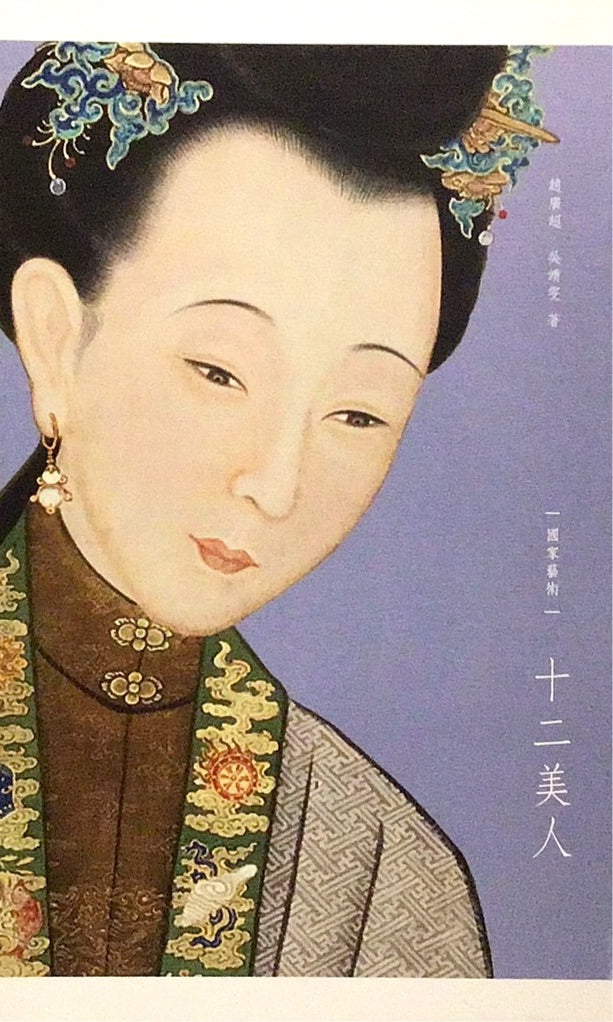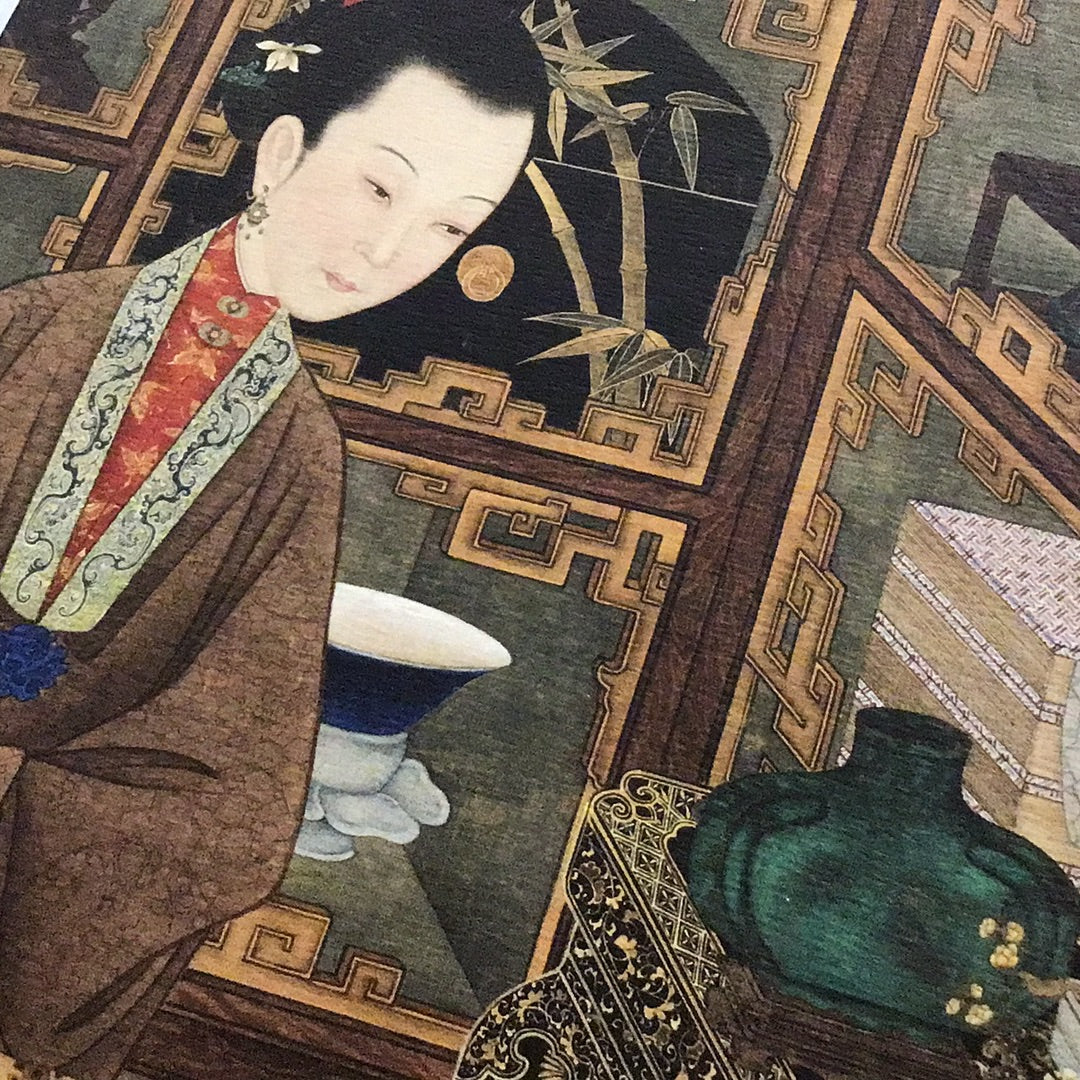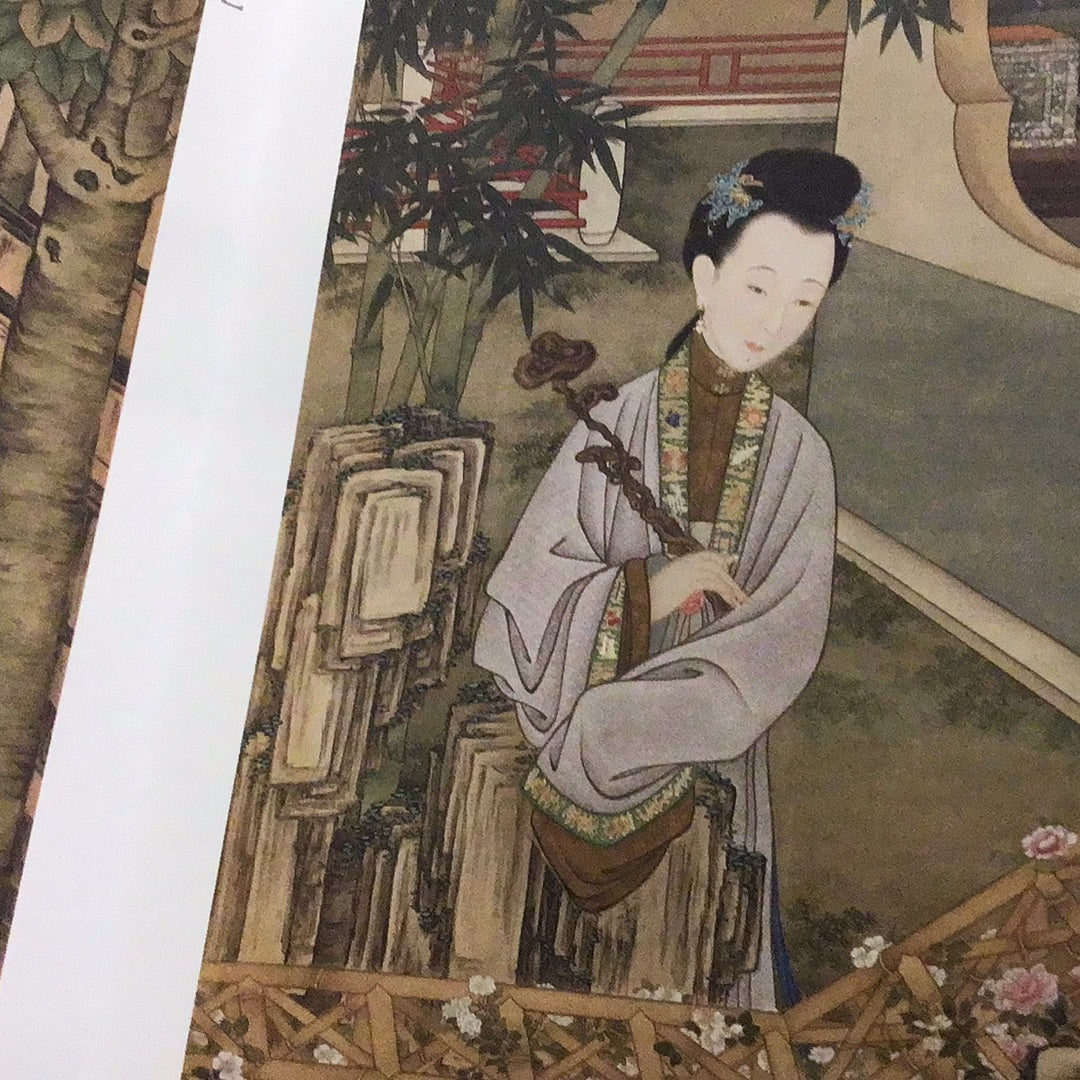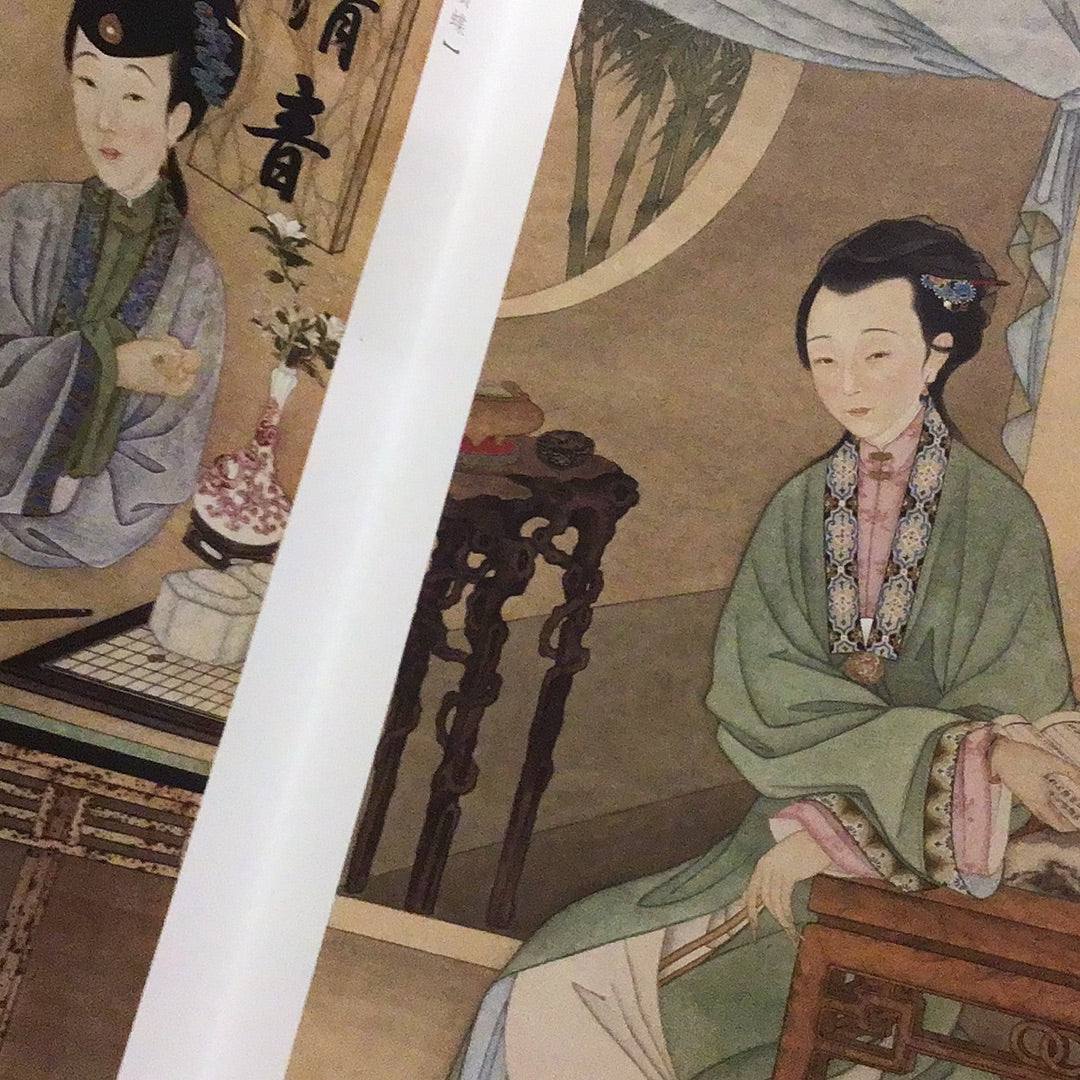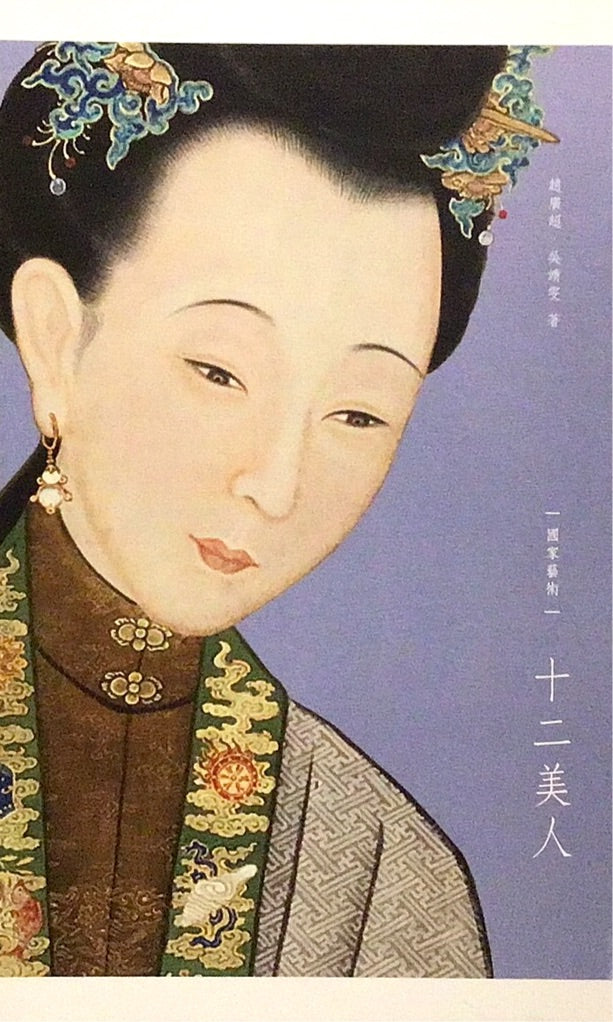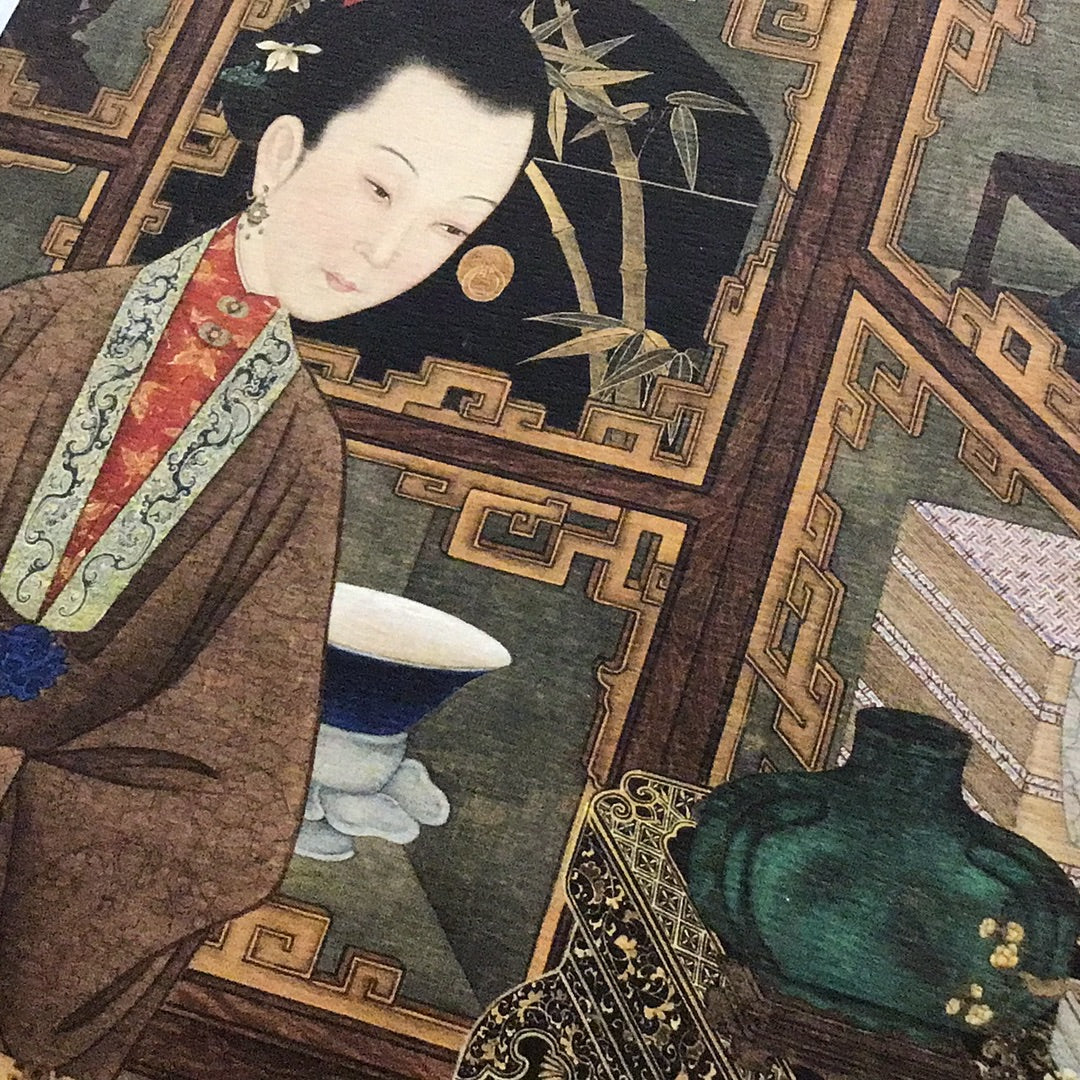twelve beauties
twelve beauties
Couldn't load pickup availability
Zhao Guangchao's new work "Twelve Beauties", one letter and two volumes.
Looking at the taste of Emperor Yongzheng, there are furnishings in the Old Summer Palace, but the Twelve Beauties have no story.
This book examines the silk paintings of the Twelve Beauties painted during the Yongzheng period to highlight the origins of the beauties, the changes in the four seasons and the twenty-four solar terms, as well as the flowers, grass, pots and stoves, chess, calligraphy, painting, and pavilions in the paintings. The decoration and exquisiteness of the pavilions reflect the artist's thoughts, as well as the taste and aesthetics of the people in the painting. This is a rare work to understand the life of ladies at that time.
The author also compares the elegance of the Twelve Beauties with the melancholy of the Western Venus, the smile of the Mona Lisa, the geometric elements of the modern Dutch painter Mondrian, and even the grid concept of modern layout design, making the viewer smile with understanding. , has also been further promoted into an exploration of the similarities and differences in the aesthetics of Chinese and Western paintings.
【Small file】
The silk paintings of the Twelve Beauties of Yongzheng are now in the Palace Museum in Beijing. Each painting is 184 centimeters long and 94 centimeters wide. Without framing, they are nearly 12 meters long when put together, which is very impressive. In 1986, Mr. Zhu Jiaxin, an expert on cultural relics from the Forbidden City, found a record in the archives of the Qing Palace Household Office on woodwork:
On August 22, the 10th year of the Yongzheng reign, according to a message from the Old Summer Palace, it was stated: The treasurer always kept twelve silk paintings of beauties removed from the screen of Shenliu Reading Hall in the Old Summer Palace, and said that the eunuch Cangzhou sent an edict: lined with paper and flat , each equipped with a rolling rod. Admire this. Today I made twelve three-foot-three-inch fir rolling poles.
Based on the woodwork of the Ming and Qing Dynasties, which is equivalent to 31.1 centimeters today, as well as the quantity and mounting information, experts determined that these paintings came from the Old Summer Palace in the early Qing Dynasty and were created around the time when Yongzheng, the third emperor of the Qing Dynasty, ascended the throne. The archives of the Ministry of Internal Affairs record the process of disassembly, modification and mounting. The completion of the screen painting should be earlier than the tenth year of Yongzheng (1732). From the perspective of Yinzhen, who was still a prince when the garden was granted to the garden in the 56th year of Kangxi (1717), it was already a story three hundred years ago.
